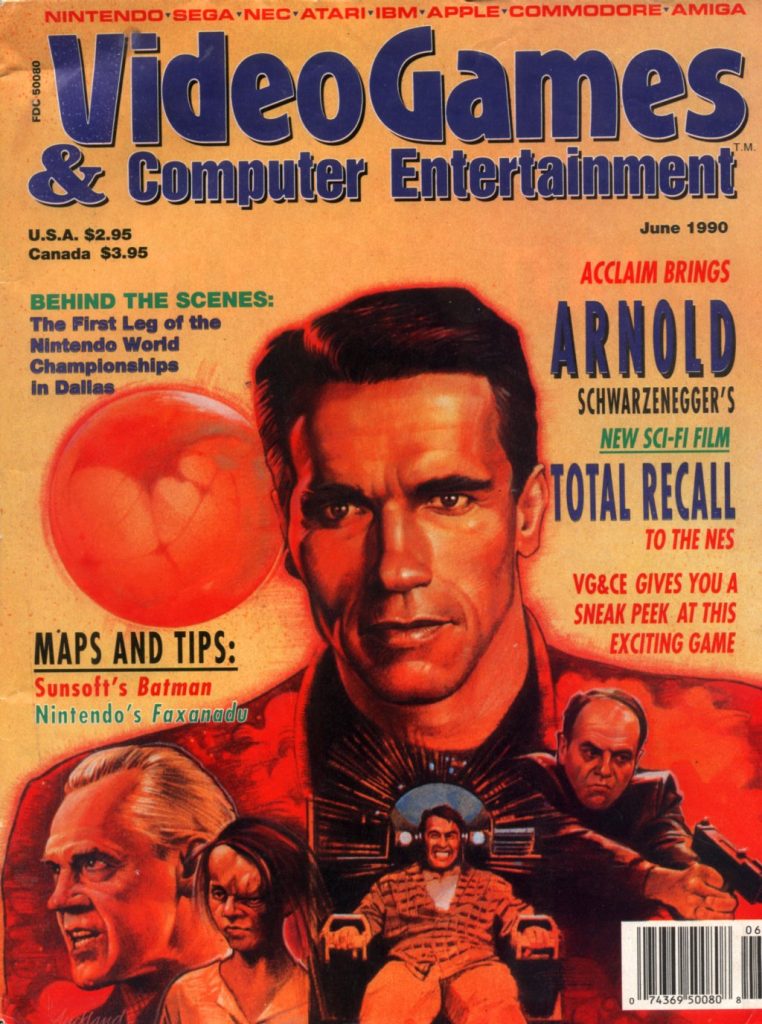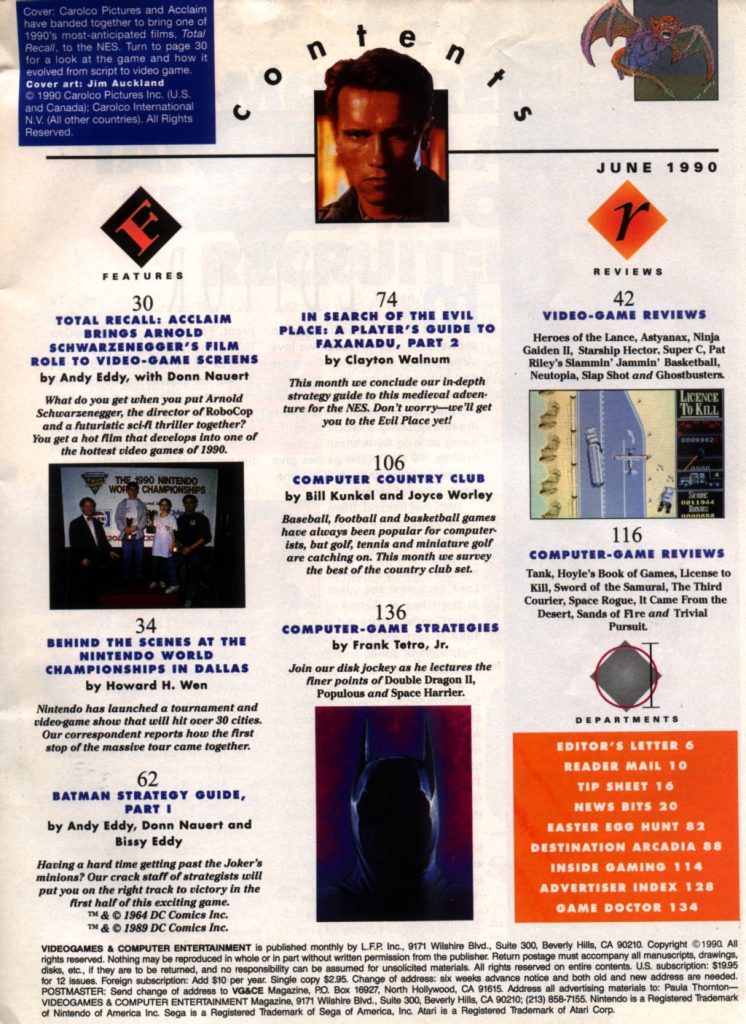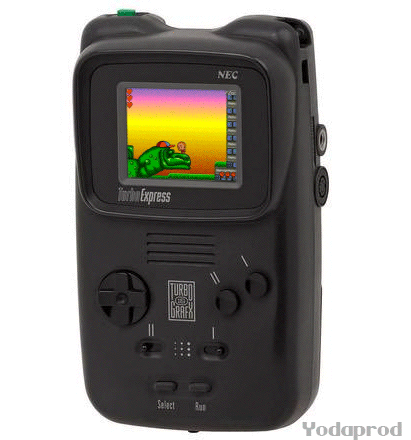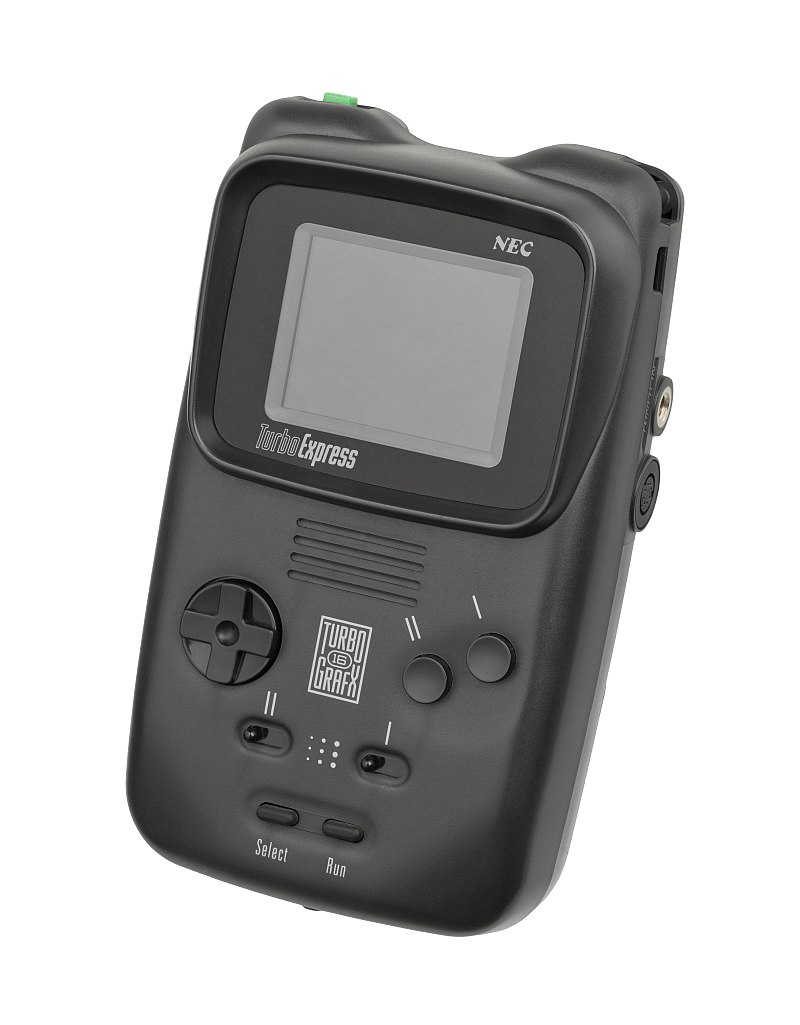VideoGames & Computer Entertainment was my favorite video game magazine of the late 1980s and early 1990s. Some of the key people responsible for the original Electronic Games magazine were involved with VG&CE. It eventually evolved into Tips & Tricks which wasn’t really my cup of tea. The June 1990 issue of VG&CE includes:
Features
- Total Recall: Acclaim Brings Arnold Schwarzenegger’s Film Role to Video-Game Screens – A detailed look at this NES game based on the movie of the same name. Like most licensed games, this one wasn’t great though I suppose it was better than some. It definitely has the nostalgia factor going for it.
- Behind the Scenes at the Nintendo World Championships in Dallas – The Nintendo World Championship had to be just about the height of the NES era. It was sort of a case of life imitating art as The Wizard had just been released in theaters the year before.
- Batman Strategy Guide, Part I – The first part of a detailed strategy guide for Batman: The Video Game for the NES. While licensed games are pretty poor the vast majority of the time, this one bucks the trend and was actually a solid game. The game and the movie are probably still my Batman favorites.
- In Search of the Evil Place: A Player’s Guide to Faxanadu, Part 2 – The second part of a detailed strategy guide for this classic NES adventure game.
- Computer Country Club – An overview of available golf and tennis games. Some of the golf games looked at here include Accolade’s Mean 18, Hole-In-One (miniature golf), Mini-Putt, World Tour Golf, World Class Leaderboard, Jack Nicklaus’ Greatest 18 Holes of Major Championship Golf, Table Tennis Simulation, Serve & Volley, and others.
- Computer-Game Strategies – Brief strategy guides for Double Dragon II (Amiga, Atari ST, Commodore 64, IBM PC), Populous (Amiga, IBM PC), and Space Harrier (Amiga, Atari ST, Commodore 64, IBM PC).
Reviews
- Video-Game Reviews – Reviews of Heroes of the Lance (NES) – (while I loved the Gold Box series of D&D games, I thought this action oriented game was pretty terrible), Astyanax (NES) – (I actually didn’t care for this one much though it got good reviews), Ninja Gaiden II (NES), Starship Hector (NES), Super C (NES), Pat Riley’s Slammin’ Jammin’ Basketball (Sega Genesis), Neutopia (TurboGrafx-16), Slap Shot (Sega Master System), and Ghostbusters (Sega Genesis).
- Computer-Game Reviews – Reviews of Tank (Spectrum Holobyte for the IBM PC), Hoyle’s Book of Games (Sierra On-Line for the IBM PC), License to Kill (Domark/Broderbund for the Amiga, Atari ST, IBM PC, and Commodore 64), Sword of the Samurai (Microprose for the IBM PC), The Third Courier (Accolade for the IBM PC), Space Rogue (by Origin for the Apple II, Commodore 64, and IBM PC – I always wanted this one), It Came From the Desert (by Cinemaware for the Amiga, Atari ST, IBM PC), Sands of Fire (by Three-sixty Software for the IBM PC and Macintosh), and Trivial Pursuit (by Parker Brothers for the IBM PC).
Departments
- Editor’s Letter – Andy Eddy discusses games based on movies and celebrities in video games.
- Reader Mail – The letters from readers this month are mostly about Nintendo’s business practices and then current anti-trust issues.
- Tip Sheet – The inaugural edition of this column includes tips and basic strategies for Kung-Fu Heroes by Culture Brain for the NES.
- News Bits – Joe Montana signs deal with Sega, new add-on for A-10 Tank Killer, Defender of the Crown creator developing Centurion: Defender of Rome, Atari opens up direct phone line for orders of Atari Lynx and Portfolio products, new newsletter for Amiga gamers, Commodore to market games machine based on Amiga 500, and much more.
- Easter Egg Hunt – Hidden features and secrets in Double Dragon II (NES), Golden Axe (Genesis), Revenge of Shinobi (Genesis), and Fighting Street (TurboGrafx-16).
- Destination Arcadia – A look at new games shown at the 1990 Acme Show in Chicago including DJ Boy from American Sammy, WWF Superstars from Technos, Klax from Atari, AmeriDarts from Ameri Corporation, Four Trax from Atari, Badlands from Atari, Metal Hawk from R. H. Belam, Capcom Bowling from Capcom, Buster Bros. from Capcom, Mercs from Capcom, Final Fight from Capcom, Vapor Trail from Data East, Too Crude – Double Dragon from Data East, Rai Den from Irem, Dragon Breed from Irem, R-Type II from Irem, Toki from Irem, Aliens from Konami, Teenage Mutant Ninja Turtles from Konami, Off Road from Leland, Trog from Bally/Midway, PlayChoice from Nintendo, Fire Shark from Romstar, Beast Busters from SNK, Neo-Geo System from SNK, Line of Fire from Sega, M.V.P. from Sega, Cadash from Taito, and lots more.
- Inside Gaming – A look at who might win the upcoming video game battle between Nintendo, Sega, and NEC.
- Game Doctor – Questions answered about music on the SMS, the NES expansion port, the TurboGrafx-16 CD-ROM add-on, transferring files between an Apple II and IBM PC, and more.
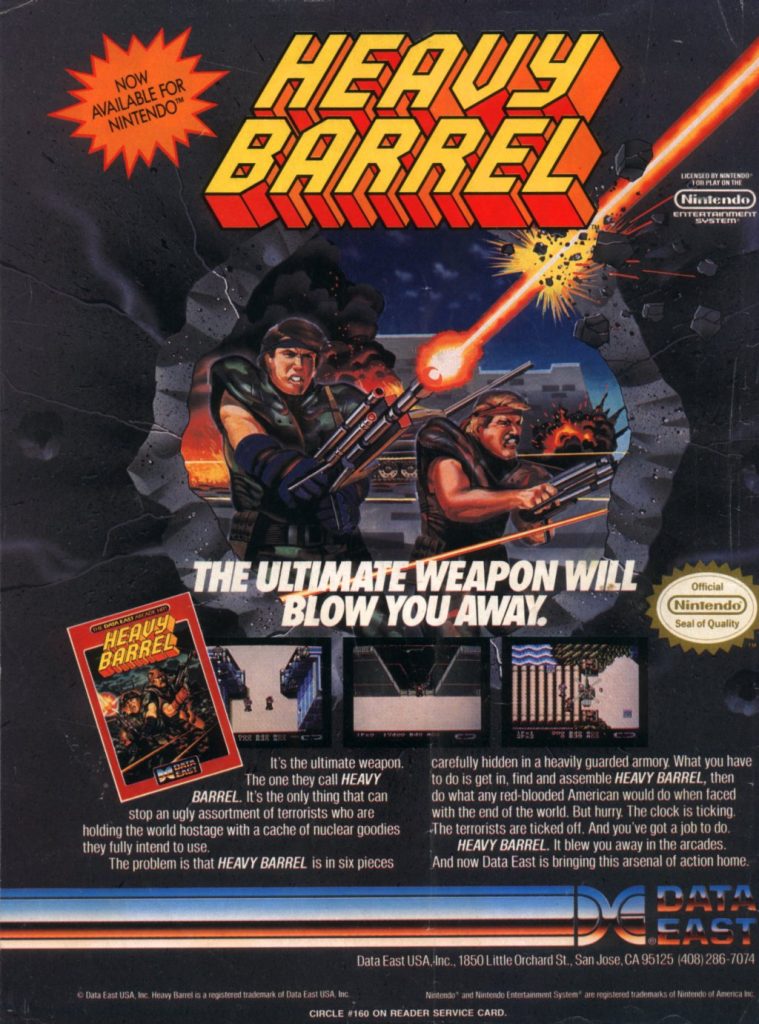
…and more!
